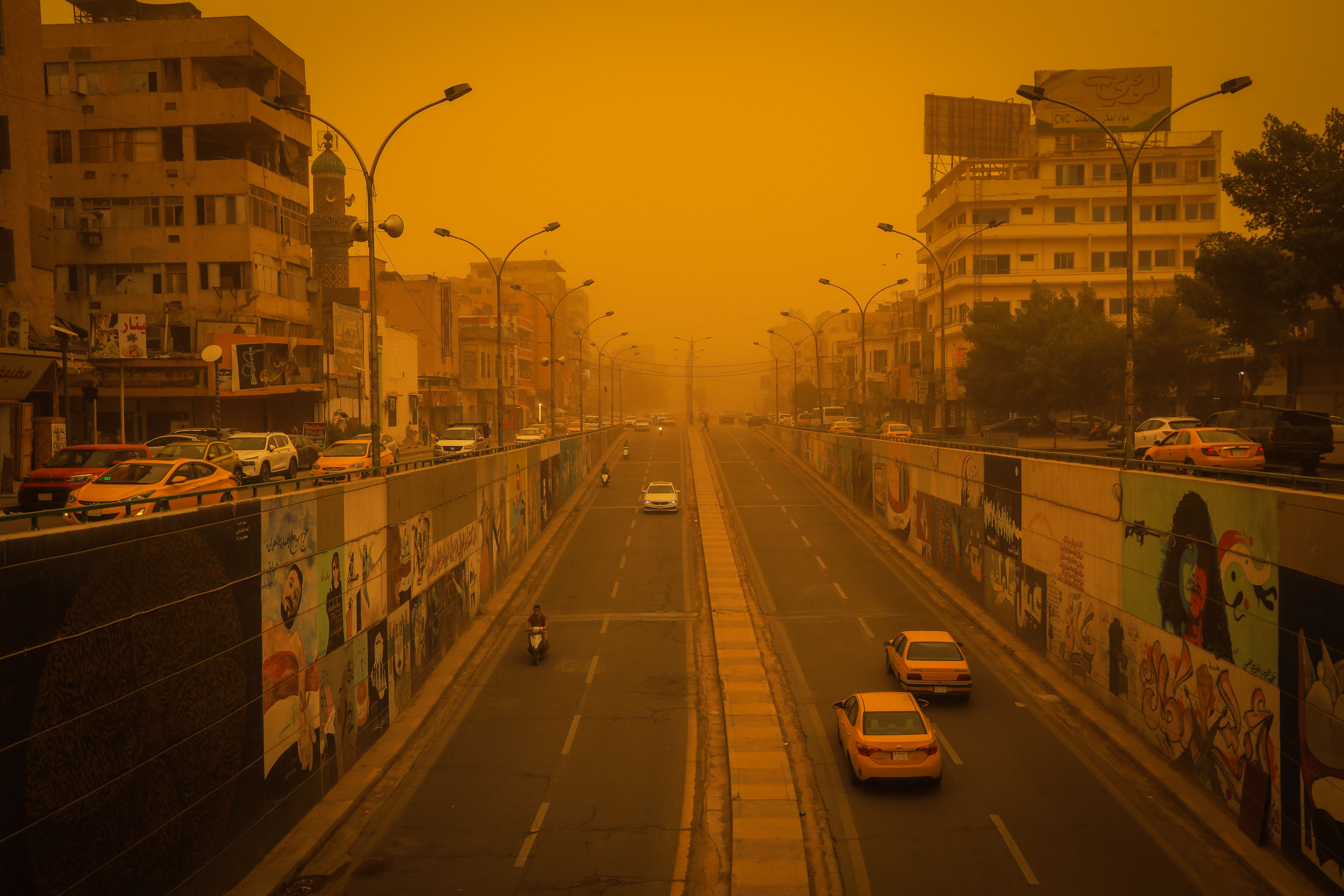
Vehicles move amid yellow dust in the Iraqi capital of Baghdad during a severe sandstorm on May 1, 2022. Sandstorms in the country have been part of a series of mind-bending extreme weather events around the world.
Anadolu Agency | Anadolu Agency | Getty Images
There’s a 50-50 chance of surpassing the critical global heating threshold of 1.5 degrees Celsius over the next five years, according to a new study.
Climate prediction centers, led by the U.K. Met Office, said in an annual update that the chance of the planet temporarily exceeding the key global temperature limit has significantly increased.
As recently as 2015, climate scientists had said there was zero chance of surpassing 1.5 degrees Celsius above pre-industrial levels in the next five years. However, the likelihood of exceeding this level was upgraded to 10% in the years between 2017 and 2021, before climbing to nearly 50% for the 2022 to 2026 period.
“It’s a 50-50 call,” the U.K. Met Office said in a press release.
That comes shortly after the U.N.’s Intergovernmental Panel on Climate Change warned that the fight to keep global heating from exceeding 1.5 degrees Celsius had now reached “now or never” territory.
IPCC scientists also repeated calls for a substantial reduction in fossil fuel use to curb global heating, now at 1.1 degrees Celsius above pre-industrial levels.
“The 1.5°C figure is not some random statistic,” said World Meteorological Organization Secretary-General Petteri Taalas. “It is rather an indicator of the point at which climate impacts will become increasingly harmful for people and indeed the entire planet.”
The 1.5 degrees Celsius goal is the aspirational global temperature limit set in the landmark 2015 Paris Agreement.
It is recognized as a crucial global target because beyond this level, so-called tipping points become more likely. Tipping points are thresholds at which small changes can lead to dramatic shifts in Earth’s entire life support system.
The WMO’s Taalas warned that global temperatures will continue to climb for as long as humanity continues to emit greenhouse gases. “And alongside that, our oceans will continue to become warmer and more acidic, sea ice and glaciers will continue to melt, sea level will continue to rise and our weather will become more extreme.”
Mind-bending extreme weather events
The annual forecast uses the best prediction systems from international climate centers to produce practical information for policymakers.
The study shows that it is now a near certainty that at least one year between 2022 and 2026 will be the warmest one on record, displacing 2016 from the top ranking — when a natural El Nino event fueled temperatures.
It also says there is a 93% chance of the five-year average for 2022-2026 being higher than that of the last five years.
“A single year of exceedance above 1.5 °C does not mean we have breached the iconic threshold of the Paris Agreement, but it does reveal that we are edging ever closer to a situation where 1.5 °C could be exceeded for an extended period,” Leon Hermanson of the Met Office said in the report.
The temperature warning follows a series of mind-bending extreme weather events around the world.
For instance, in the last few months, a brutal heatwave swept across parts of India and Pakistan; authorities urged people in Iraq to stay indoors as sandstorms blanketed the country; and an ice shelf the size of New York City collapsed in East Antarctica following record-high temperatures.
The deepening climate crisis prompted the largest mass youth climate strike since 2019 in late March, with hundreds of thousands of environmental activists from 93 countries on all continents marching under the banner of “#PeopleNotProfit.” The Fridays For Future movement called for climate reparations and justice.
Source: CNBC
